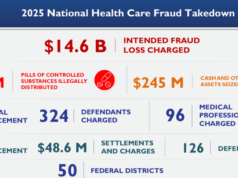The healthcare industry is evolving rapidly. With rising costs and complicated rules, brand-new healthcare companies need to give value-based care to be successful. One crucial factor for success is the implementation of efficient documentation systems that can boost return on investment (ROI).
How Efficient Documentation Matches Healthcare Startup Goals
The U.S. could save $175 billion in healthcare costs by halving administrative expenses. Efficient documentation plays a crucial role in helping healthcare startups achieve their organizational goals, enhance patient care, and ensure seamless coordination across various healthcare settings.
The use of structured documentation systems, with an SOAP note template, can significantly contribute to these outcomes. The SOAP note format, which stands for Subjective, Objective, Assessment, and Plan, provides a clear and systematic way for healthcare providers to document patient encounters.
Here’s how efficient documentation, including the use of SOAP note templates, aligns with healthcare startup goals:
- Improves Care Coordination: By utilizing structured documentation like SOAP notes, healthcare providers can ensure that patient information is clear, concise, and easily transferable across different care settings. This minimizes gaps in care when patients transition between hospitals, clinics, home health services, and more, thereby enhancing the continuum of care.
- Enhances Patient Engagement: Efficient systems, supported by user-friendly documentation methods like SOAP notes, empower patients. They make it easier for patients to access their own records, communicate with healthcare providers, and actively participate in telehealth services. This level of engagement is crucial for patient-centered care and leads to improved health outcomes.
- Enables Population Health Management: Aggregated and well-documented clinical data, structured in an accessible format like the SOAP notes, facilitates the analysis of health trends within specific populations. This allows healthcare startups to identify at-risk groups and intervene with preventive measures, thereby shifting the focus from treatment to holistic wellness and prevention.
- Allows for Measuring Strategic KPIs: Key Performance Indicators (KPIs) related to billing, care collaboration, patient satisfaction, and community health can be more accurately tracked and analyzed when documentation is systematic and efficient, as with the SOAP format. This leads to data-backed insights and informed decision-making, driving continuous improvement.
The integration of SOAP note templates into a healthcare startup’s documentation system can therefore be a pivotal strategy. It not only streamlines information sharing and coordination but also enhances patient engagement, facilitates population health management, and provides a solid foundation for measuring and achieving strategic goals.
The ultimate result is a healthcare service that is coordinated, continuous, and cost-effective, with a proven potential to significantly lift patient satisfaction and reduce hospital readmissions, while dramatically boosting the return on investment through improved operational efficiencies.
Involving doctors more in billing processes alone can lead to a potential boost in hospital ROI by as much as 700% or even higher in some cases, making it an enormous opportunity.
| Traditional Documentation | Efficient Documentation with SOAP Notes | |
| 1. Care Coordination | Information gaps during transitions between care settings | Structured data enables smooth patient info sharing across settings |
| 2. Patient Engagement | Limited patient access to records and telehealth options | User-friendly portals and telehealth powered by efficient systems boost engagement |
| 3. Population Health Management | Difficulty analyzing trends across patient data | Aggregated, structured data identifies at-risk groups for targeted interventions |
| 4. Performance Tracking | Inconsistent data makes measuring KPIs difficult | Systematic documentation allows accurate tracking of strategic metrics |
| 5. Administrative Efficiency | Manual processes require more staff for paperwork | Automated systems reduce administrative costs and staffing needs |
| 6. Clinical Outcomes | Inconsistent adherence to evidence-based protocols | Easier access to integrated patient data improves personalized care plans |
| 7. Organizational Efficiency | Coordination and planning challenged by information gaps | Structured data improves coordination for bed capacity, length of stay, discharge, etc. |
| 8. IT Project Success | Many failed implementations | Adjusting workflows and training for new systems are key for ROI |
| 9. Data Integration | Fragmented data from apps and wearables | Standards enable integrated analysis from multiple sources for insights |
Financial Impacts: The Bottom Line
Efficient documentation has big financial benefits. Automated systems significantly reduce:
- Administrative costs from manual paperwork and data entry
- Staffing needs since fewer employees are needed to manage records
- Claim rejection rates by capturing complete documentation the first time
These add up to major cost savings, freeing up money to invest in value-based initiatives like preventive care and community services.
For example, using tablets to collect structured data during patient visits cut documentation time by 30%. It also lowered transcription costs by 80% since less dictated notes were needed.
Efficient systems also enable detailed data analysis to spot use trends and cost drivers. With insights backed by accurate data, startups can make strategic decisions to strengthen their financial health.
Improving Patient Experiences and Health Outcomes
While finances matter, a healthcare startup’s main goal is improving patient outcomes through high-quality, personalized care. Efficient documentation leads to better adherence to evidence-based treatment protocols, enabling optimal plans tailored to each person.
Specifically, integrating emerging technologies like wearables, remote monitoring tools, and telemedicine visits facilitates:
- Proactive condition management by continual access to patient data, reducing acute flare-ups that require hospitalization.
- Early intervention for worsening symptoms is based on real-time data from home monitors and devices. This allows for addressing problems before they escalate.
- Personalized care plans incorporating patient priorities and choices, increase satisfaction.
- Shared decision-making around preference-sensitive conditions, aligning on acceptable risk levels.
Population health analytics on combined regional data also help predict upcoming local health issues and demands. This allows appropriate planning resources and programs.
With accurate patient records available at the point of care, doctors can offer timely consultations, follow-ups, and data-driven recommendations. Documented care plans also minimize errors by coordinating interventions across care teams.
Studies show efficient clinical documentation systems can lower hospital readmission rates by 8-13%. Mortality rates may also drop 10-30% through early detection and intervention when issues first arise.
Ripple Effects On Organizational Efficiency
Beyond direct patient impacts, efficient documentation improves organizational operations in healthcare companies. Structured data bolsters logistical coordination in areas like
- Hospital bed capacity use and turnover
- Average length of patient stay
- Discharge planning and coordination
According to one study, advanced EHR systems can provide $10,000 – $20,000 in additional margin per hospital bed per year.
Efficient systems also minimize duplicative testing, overtreatment, and delays. This allows appropriate resource allocation while lowering liability risks.
The Evolving Nature Of Healthcare IT ROI
As healthcare IT keeps advancing, ROI measures are evolving from short-term financial returns to long-term value creation.
Annual health expenditures stood at over 4.2 trillion U.S. dollars in 2021. While cost reduction remains crucial, full-scale IT projects now demonstrate favorable clinical, operational, and financial returns across the care spectrum.
However, realizing ROI depends on key organizational factors:
- Adjusting workflows to fully leverage system capabilities
- Training staff on new technologies and processes
- Ensuring stakeholder buy-in across clinicians, administrators, and patients
Past failures of some IT rollouts highlight the need for careful change management when implementing new tools.
Integrating Digital Health Apps
Consumer demand for mobile health apps and wearable trackers is rising exponentially. However, maximizing ROI requires blending these fragmented data sources into interconnected platforms.
Standardization enables the analysis of integrated insights from fitness devices, telehealth services, and patient engagement apps, creating a more comprehensive view of health and long-term outcomes.
However, app developers must implement privacy-preserving designs and enterprise-grade security. Patient trust depends on the ethical use of sensitive health information.
Integrated digital platforms, supported by robust standards and governance models, have the potential to transform evidence-based care.
FAQ’s
1. How do efficient documentation systems directly impact healthcare startup ROI?
By streamlining administrative and clinical workflows, efficient documentation reduces costs while improving care quality and patient outcomes. This enhances financial sustainability.
2. What are the measurable impacts of efficient documentation on patient care?
Specific measurable benefits include reduced readmission rates, fewer medical errors, better adherence to evidence-based protocols, lower mortality rates, and higher patient satisfaction.
3. How can startups integrate their digital health apps with existing systems?
Collaborating to design secure, interoperable APIs enables connecting siloed apps into comprehensive platforms. Governance models should outline appropriate data sharing while maintaining patient privacy.
The Future Is Data-Driven
In today’s results-focused healthcare world, efficient documentation separates successful startups from stuck-in-the-past systems.
Structured data and connected technologies will support the learning health systems of tomorrow. They’ll allow continuous improvement of care quality, efficiency, and money returns through data analysis and shared benchmarks.
For startups seeking purposeful growth despite evolving industry challenges, leveraging efficient documentation remains pivotal. Their core mission is to serve patients and communities to the best of their abilities.
The future promises many exciting healthcare advances. But none may be as foundational as streamlined systems capturing, analyzing, and sharing data to drive better health results. Efficient data use can power breakthroughs across every new solution.
Putting data to work efficiently can lead to big things like
- Spotting and predicting outbreaks earlier to contain diseases.
- Matching the right treatments to each patient’s unique biology based on their genetics and biomarkers.
- Automating mundane paperwork so doctors and nurses can focus on patients.
- Letting AI assistants help with care coordination and health monitoring.
- Empowering patients to manage their health day-to-day using home devices and apps.
- Designing preventive care plans tailored to each person’s risks and needs.
- Allocating resources to underserved communities based on population health data.
- Making billing processes seamless and painless for patients and providers.
Healthcare centers around people, including patients, families, doctors, nurses, and communities. But data is what will connect them to shepherd in the next generation of solutions. Startups that recognize this potential will have the power to positively transform the future of medicine.














